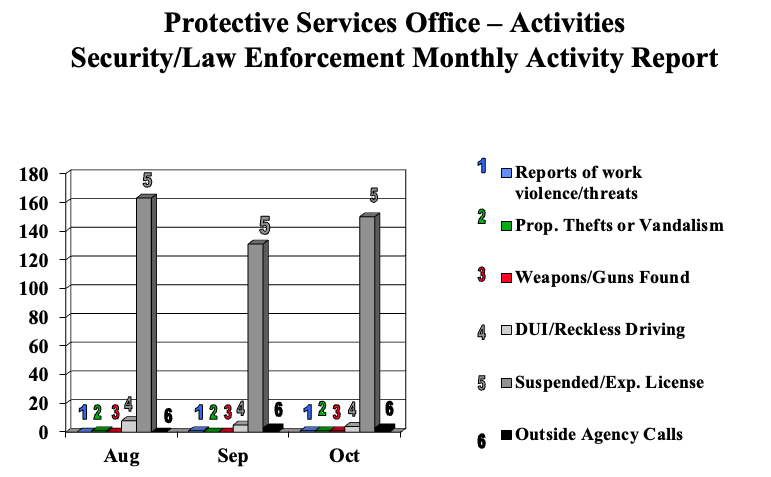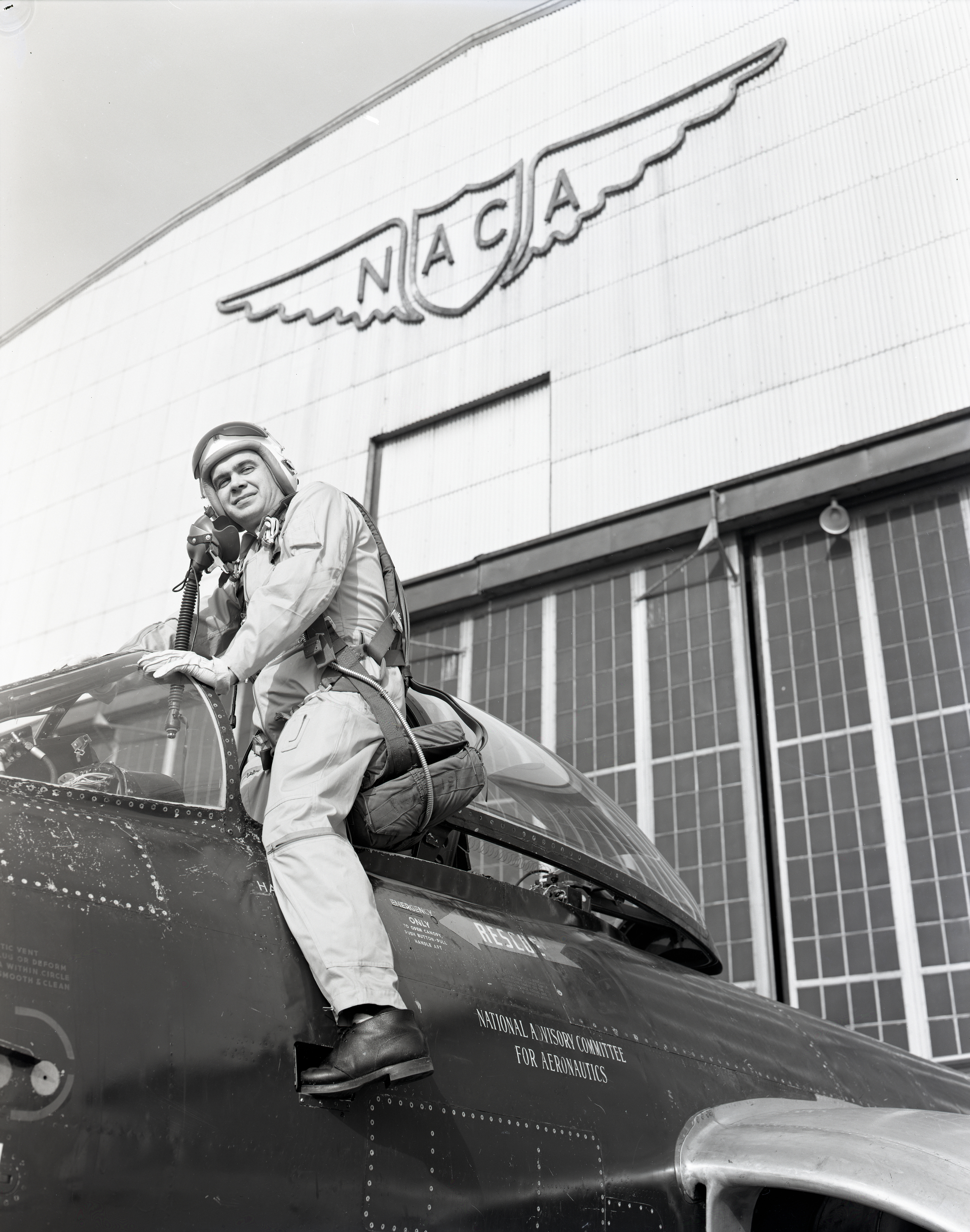NASA Ames Astrogram – November/December 2023
Astronaut Candidates Visit Ames and Learn about Heat Shields and More On Nov. 8, NASA’s current class of astronaut candidates toured Ames Research Center which included a stop at the Arc Jet Complex. In the arc jet facilities, Ames researchers test advanced materials that protect spacecraft from the extremely high temperatures of entering an atmosphere – whether […]
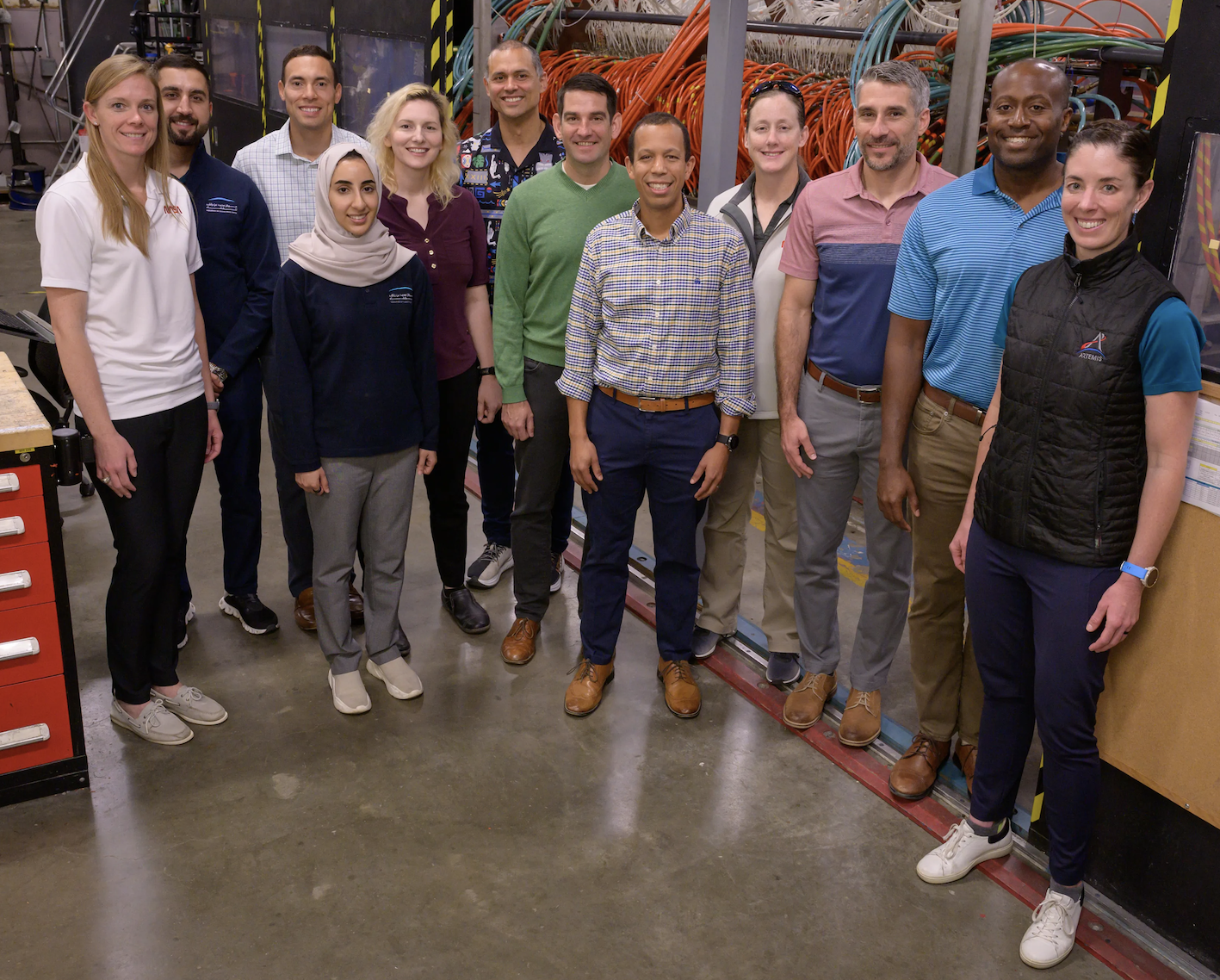

Astronaut Candidates Visit Ames and Learn about Heat Shields and More
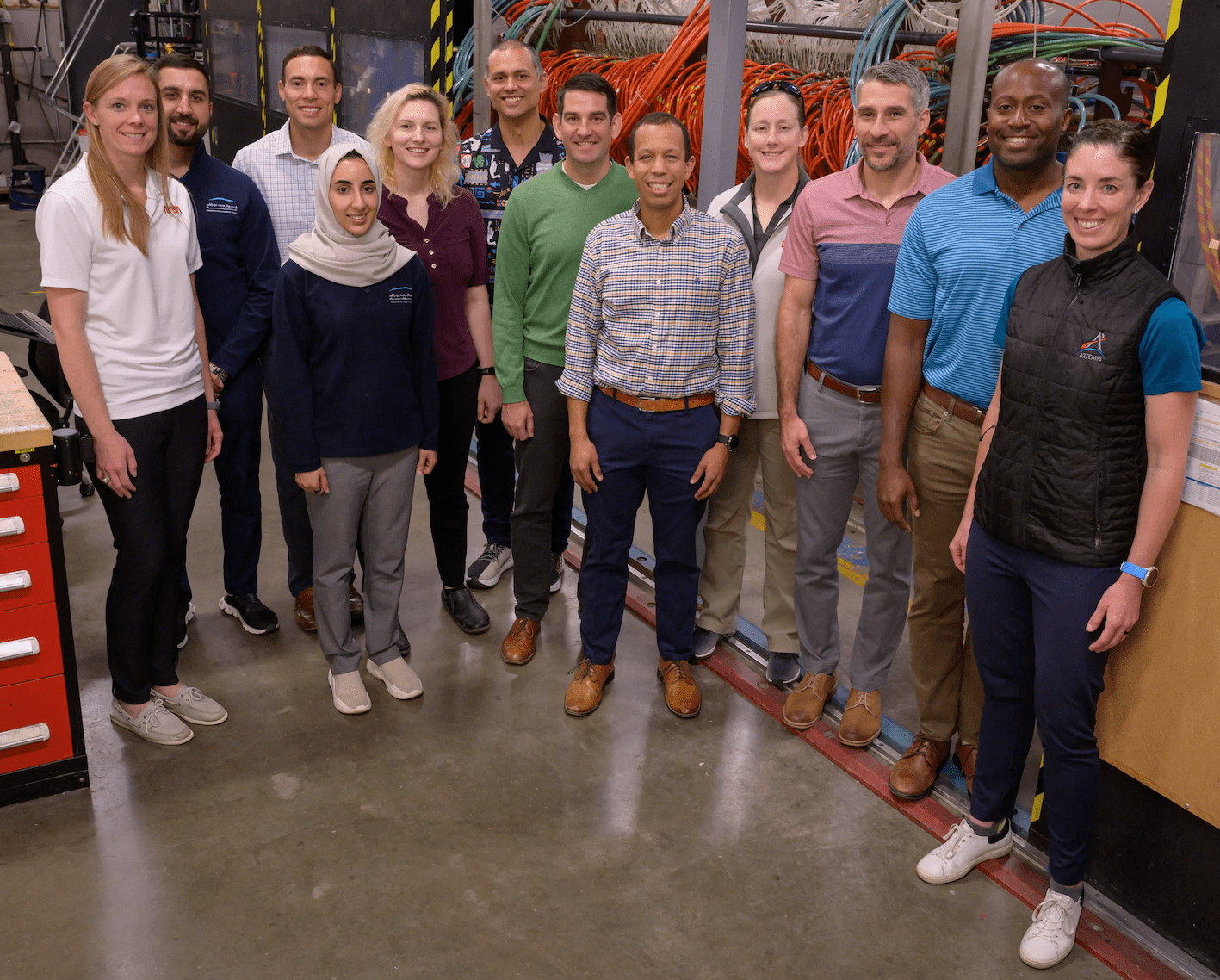
On Nov. 8, NASA’s current class of astronaut candidates toured Ames Research Center which included a stop at the Arc Jet Complex. In the arc jet facilities, Ames researchers test advanced materials that protect spacecraft from the extremely high temperatures of entering an atmosphere – whether Earth’s, Mars’, or another in our solar system.
Among the candidates aiming to join America’s astronaut corps are women and men who will potentially fly on future Artemis missions, performing science on the Moon and exploring the resources it holds. Work performed in the arc jet will help ensure all Artemis astronauts return home safely. For Artemis I, launched in November 2022, material used in the Orion crew module’s heat shield was tested here at Ames.
The astronaut candidates – including former Ames intern Deniz Burnham – also visited other Ames facilities, learning about their contributions to Artemis and more. These include wind tunnel testing and supercomputer simulations of the SLS (Space Launch System) rocket; development of the Astrobee free-flying robots that could assist future astronauts on missions; space biosciences research that will help keep crew healthy; and flight simulations at the Vertical Motion Simulator, where NASA’s human landing system program partners analyzed and improved early lander concepts to deliver humans to the lunar surface as part of the Artemis missions.
Public Invited to NASA’s Viper Moon Rover Build Watch Party
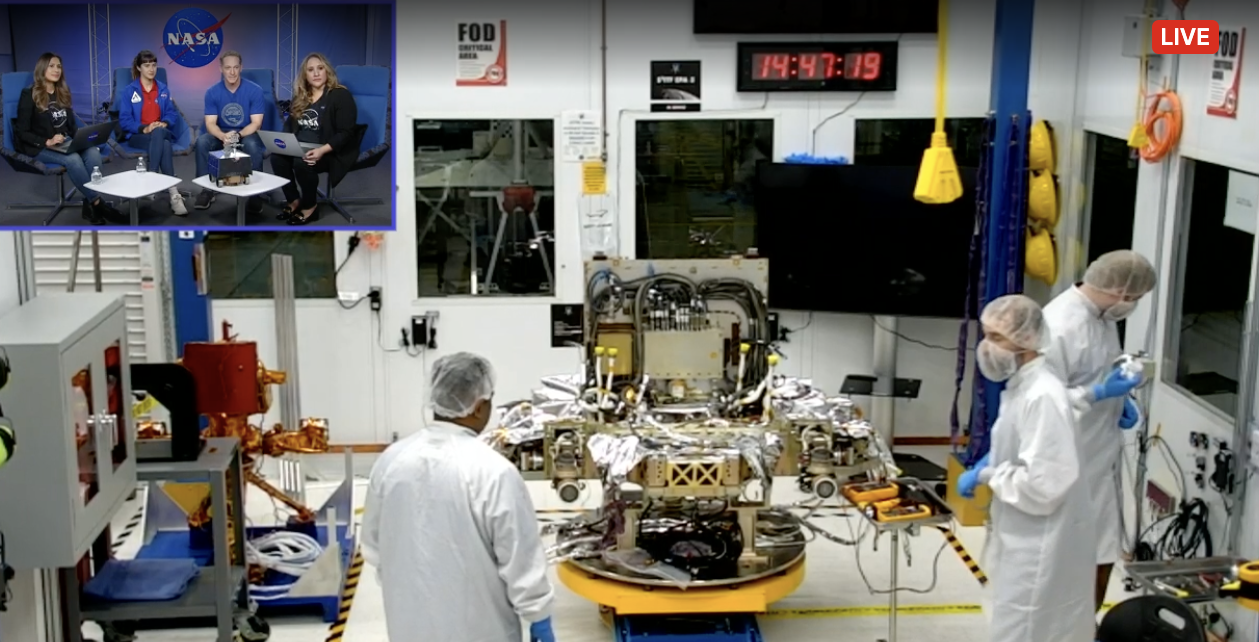
The public was invited to a live, front row seat to see NASA’s first robotic Moon rover take shape in the Surface Segment Integration and Testing Facility clean room at the agency’s Johnson Space Center in Houston. Members of VIPER — short for the Volatiles Investigating Polar Exploration Rover — and the Office of Communications at NASA Ames hosted watch parties and answered uestions from the public about the mission in both English, Nov. 8 and Spanish on Nov. 9.
These webchats and watch parties will occur as the rover is assembled and tested, approximately once a month from November 2023 through January 2024 . In late 2024, VIPER will embark on a mission to the lunar South Pole to trek into permanently shadowed areas and unravel the mysteries of the Moon’s water.
“We’re really excited for people to see the VIPER rover hardware coming together,” said Daniel Andrews, the VIPER mission project manager at NASA Ames. “All of our planning and ideas are now going into building this first-of-its-kind Moon rover.”
Individual components such as the rover’s science instruments, lights, and wheels, have already been assembled and tested. Once delivered to the testing facility, other components will be integrated together to become the approximately 1,000-pound VIPER.
Months of final assembly and testing lie ahead before VIPER is ready to ship to the Astrobotic Payload Processing Facility in Florida in mid-2024. VIPER’s lunar landing atop Mons Mouton is scheduled for late-2024, where it will get a close-up view of the lunar surface and measure the location and concentration of water ice and other resources. Using its drill and three science instruments, researchers will gain a better understanding of how frozen water and other volatiles are distributed on the Moon, their cosmic origin, and what has kept them preserved in the lunar soil for billions of years. VIPER will also inform future Artemis missions by helping to characterize the lunar environment and help determine locations where water and other resources could be harvested to sustain humans for extended missions.
NASA Ames manages the VIPER mission and also leads the mission’s science, systems engineering, real-time rover surface operations, and the rover’s flight software. The rover vehicle is being designed and built by NASA’s Johnson Space Center in Houston, while the instruments are provided by Ames, Kennedy Space Center in Florida and commercial partner Honeybee Robotics in Altadena, California. The spacecraft, lander, and launch vehicle that will deliver VIPER to the surface of the Moon will be provided through NASA’s Commercial Lunar Payload Services initiative, delivering science and technology payloads to and near the Moon.
For more information about VIPER visit:
“A Million Miles Away” Exclusive Screening Held for Farmworker Families
by Maria C. Lopez
Local farmworker families had a special opportunity to meet former astronaut Jose Hernandez and watch a screening of the movie “A Million Miles Away” on October 29, at the Mexican Heritage Plaza in San Jose. The movie highlights Hernandez’ humble beginnings as a farmworker and inspires viewers to reach for the stars and pursue their dreams despite obstacles. The event was organized by Darlene Tenes, founder of the Farmworker Caravan, supported by the Santa Clara County Office of Education Migrant Education Program, and began with a STEM fair attended by City of San Jose Mayor Matt Mahan, who connected with attendees and booth hosts.

The STEM fair showcased NASA; the Latinos at Amazon employee resource group (ERG); alpha public schools, where one in San Jose is named after Jose Hernandez; and local Hispanic community-based organizations. The NASA booth featured NASA’s graphic novel “First Woman” (La primera mujer) and NASA posters in Spanish as well as English content on various missions and was staffed by the Office of Communications in partnership with Ames’ Hispanic Advisory Committee for Employees (HACE) ERG, including Jose Chavez-Garcia, current junior research scientist – Analytical Mechanics Associates. Chavez-Garcia was recognized at the event as one of the role models for starting with a farmworker background and achieving professional success. Participants enthusiastically enjoyed interacting with the NASA Ames staff and taking selfie photos with the enormous NASA inflatable rocket, astronaut, and meatball logo.
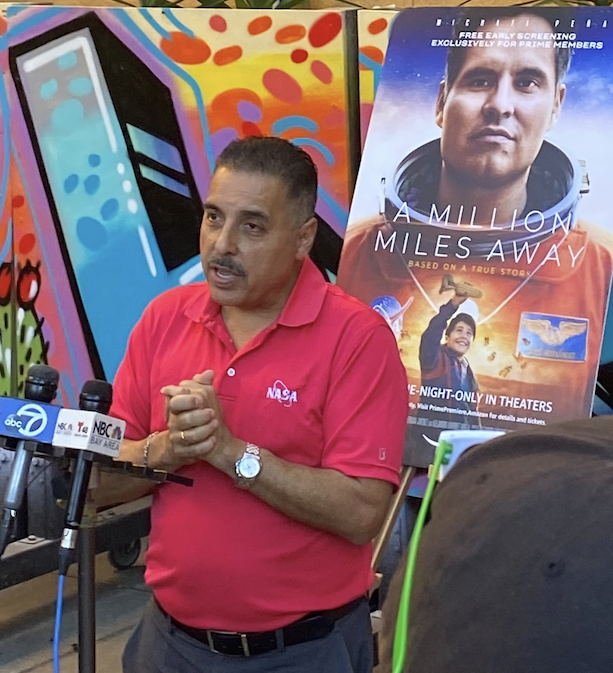
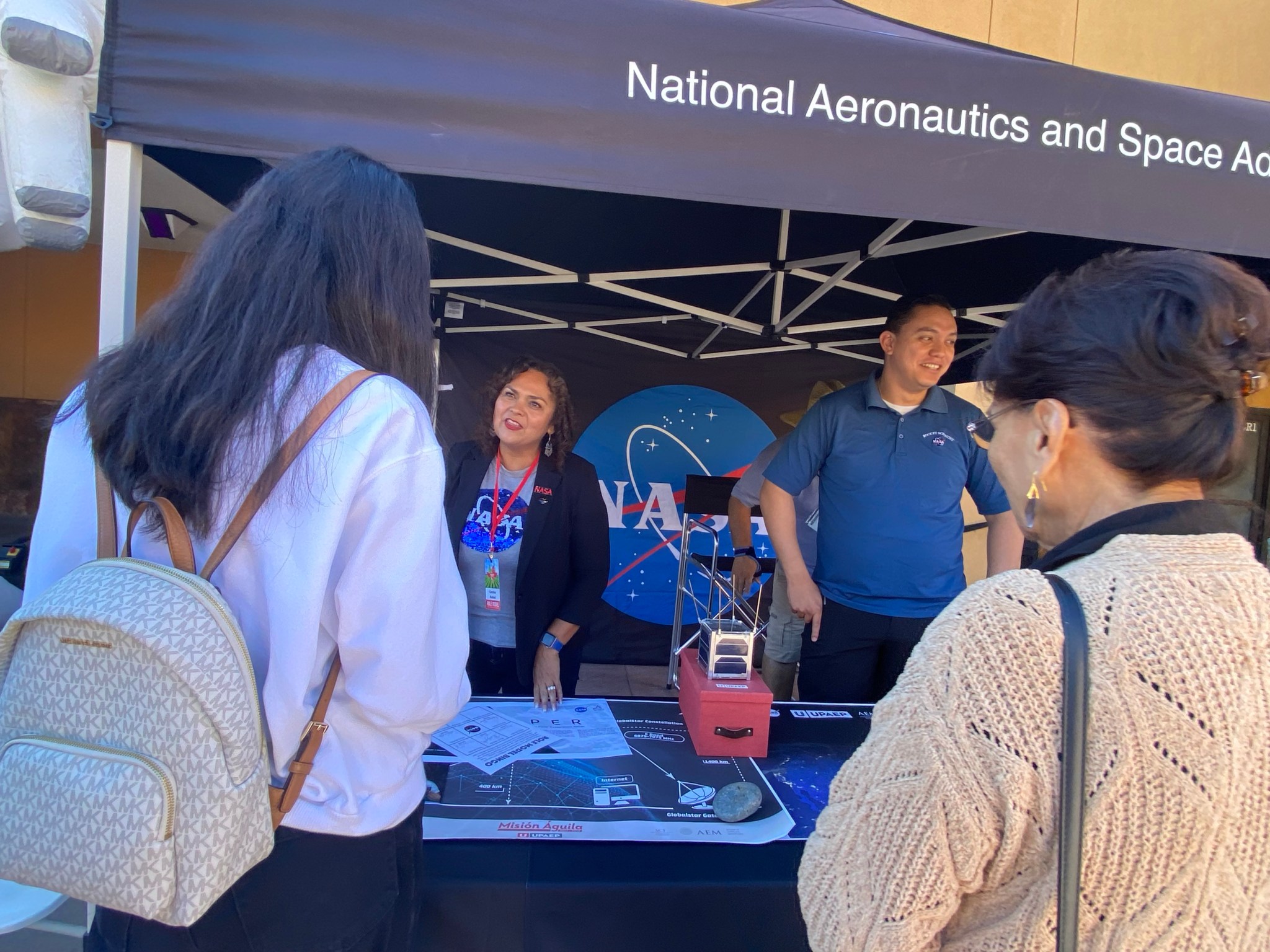
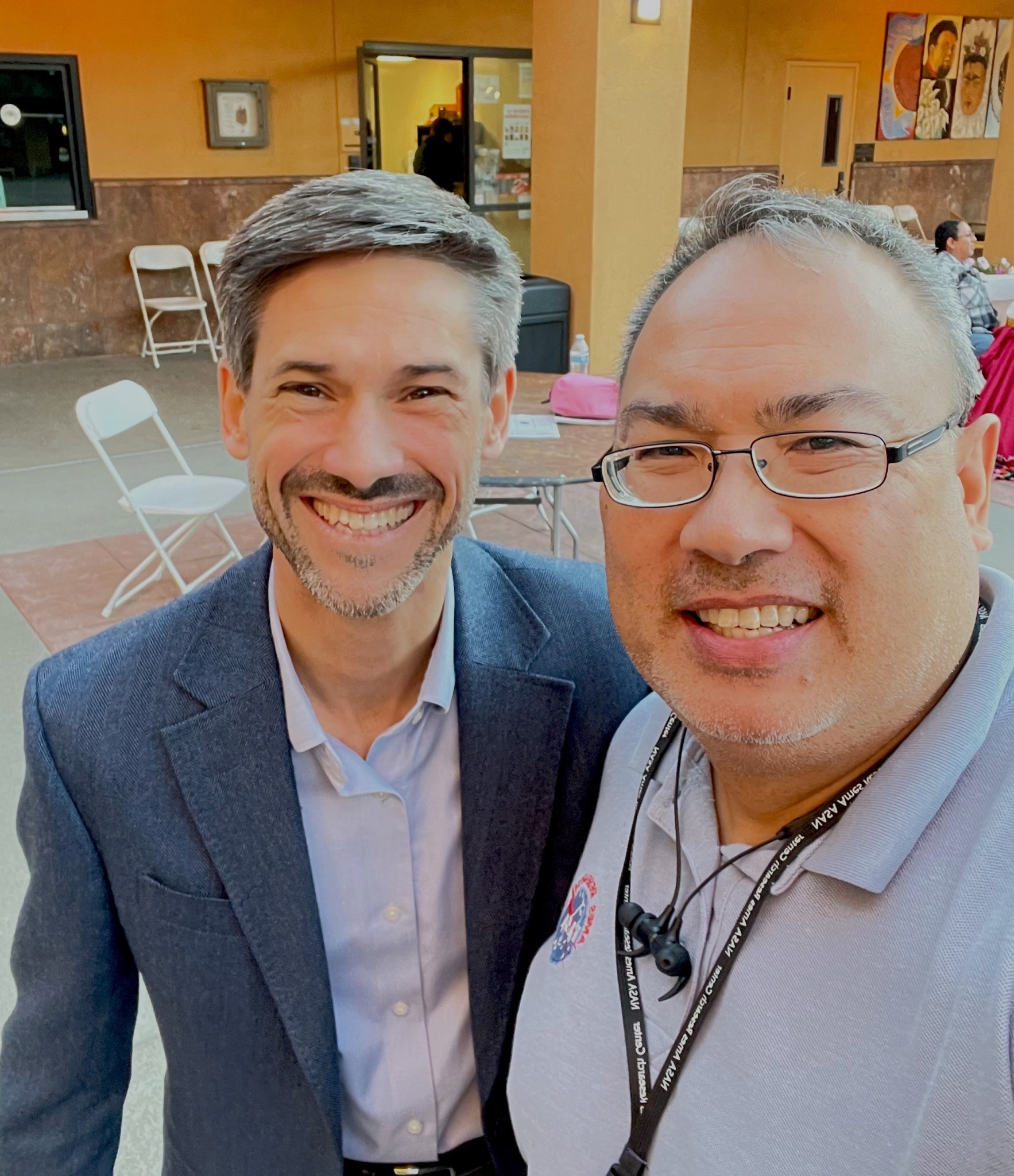
During the movie screening, a press conference was held and Hernandez spoke about the value of the Hispanic workforce in the United States. Hernandez was asked what he wanted people to take away from the movie and he expressed “never, ever give up on yourself.” In addition, Ames’ Carolina Rudisel, also recognized as a role model at the event, was interviewed by local media, including ABC7 Bay Area. Rudisel has multiple roles at Ames – protocol officer, VIPER project coordinator, and special emphasis program manager for African Americans. She shared about her childhood farm working background and emphasized the significance of the movie “A Million Miles Away” as representation matters, and many students and families realize possibilities through Hernandez’ experience.
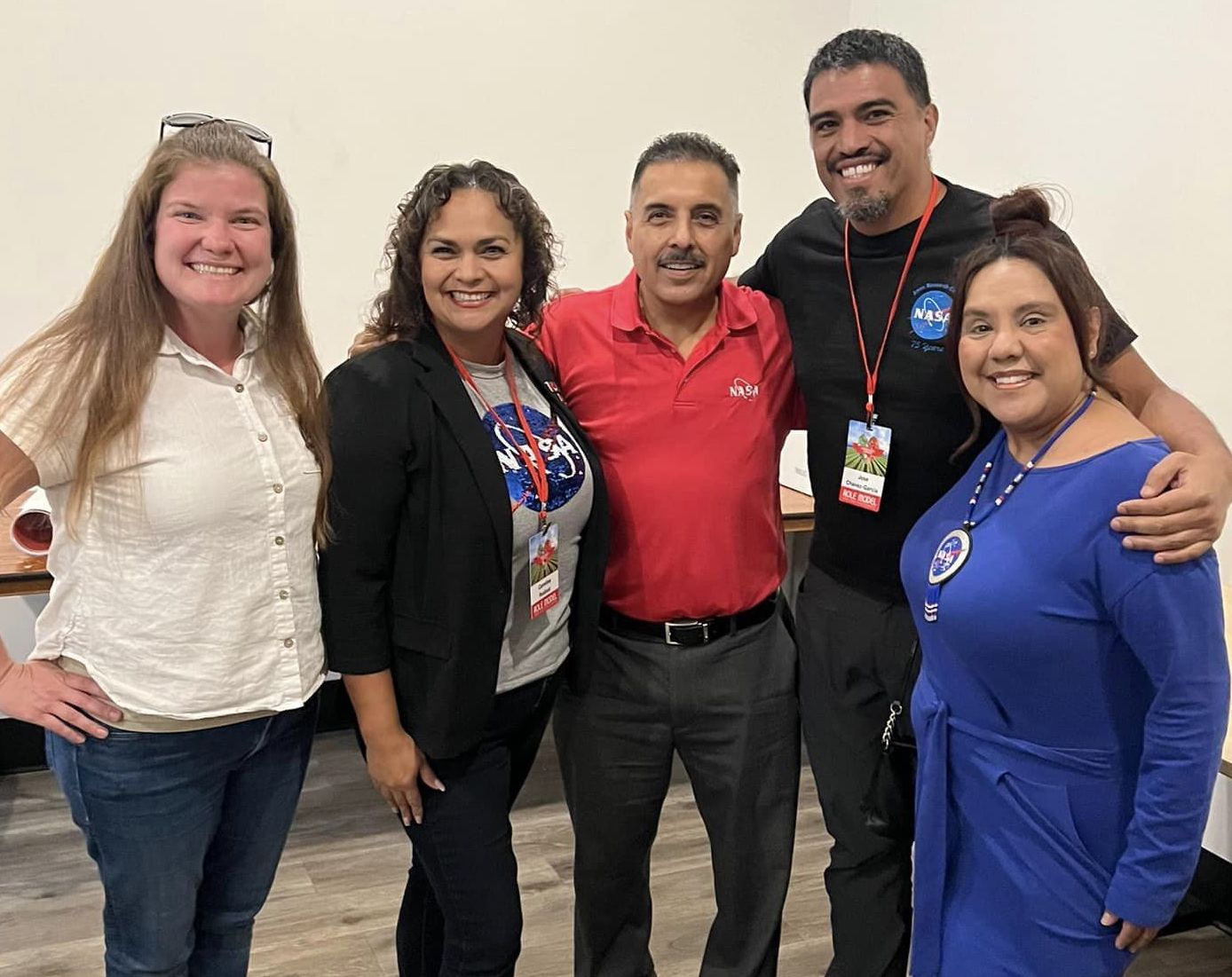
Following the movie, participants were ecstatic for Hernandez to greet the group in-person and participate in a fireside chat involving a question-and-answer session with the audience. Hernandez warmed everyone’s heart further by meeting with people individually. The NASA Ames staff was equally excited to meet Hernandez and honored to promote NASA at the powerful community event.
Statistical Summary of Activities of the Protective Service Division’s Security/Law Enforcement and Fire Protection Services Units for Period Ending October 2023
